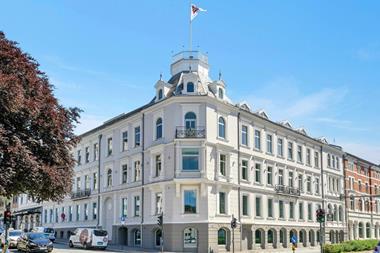Swedish occupational pension provider Alecta says it remains cautiously optimistic about return prospects in the property markets it invests in despite higher prices because the fundamentals are still solid.
In 2015, Alecta – which has SEK732.5bn (€78.7bn) in pension assets – produced an 18.4% overall return on its real estate investments, up from 12.3% in 2014.
Property gave the highest return of Alecta’s three main asset classes last year, with listed equities generating 9%, down from 17.5% the year before, and fixed income producing a return of 1.2%, down from 9.4%.
CIO Per Frennberg told IPE Real Estate: “All three sub-portfolios generated returns far above their local benchmarks.”
Alecta’s real estate portfolio is split into three countries – Sweden, the US and the UK – with these sub-portfolios holding 50%, 30% and 20% of Alecta’s property assets, respectively.
“Our outperformance was a combination of favourable sector allocations in each sub-market, strong individual asset returns and, finally, very strong returns from our indirect and joint venture-related structures, which all include moderate leverage,” Frennberg said.
Alecta’s Swedish indirect property investments returned 27% last year compared with the 17% return achieved on direct holdings.
Frennberg said Alecta was cautiously optimistic on the outlook for real estate in its key markets, despite recent strong performance, because it believed the fundamentals were still solid.
He noted that these property markets had now seen several strong years in a row, which was usually a warning signal.
“At the same time, we have interest rates at historically low levels – even negative in Sweden – and strong demand for space, healthy rental growth and muted new supply, so the outlook shouldn’t be too bad,” he said, emphasising that the level of new supply was the fundamental driver in real estate markets.
“Higher prices will always dampen our appetite for new investments, all other things being equal, but (…) other factors are not equal at the moment,” Frennberg said.
Around 75% of Alecta’s property portfolio is invested in directly owned properties, managed by local in-house staff in each market, and the remaining 25% of its total real estate portfolio is invested in various indirect vehicles, with the latter usually including moderate leverage.
Leverage within these vehicles is just below 50% on a loan-to-value basis on average, though this average varies between the countries Alecta invests in.
Asked whether Alecta did anything well within its real estate investment that other institutional investors did not do, Frennberg said the pension provider differed in the way it focused on low total management costs, in-house management and active management.
“We are less macro and more micro, you could say,” he said.
Within real estate, the team has been quite active in the joint-venture arena, he said, adding that, although this is not unique, Alecta has been quite successful there.









